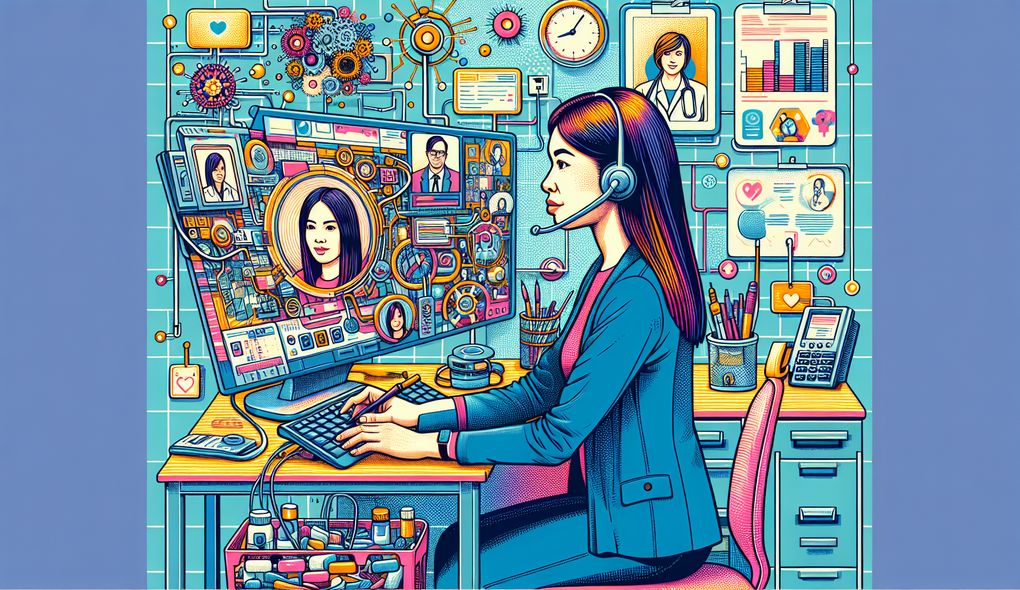How do you prioritize and manage multiple technical issues simultaneously?
INTERMEDIATE LEVEL

Sample answer to the question:
When prioritizing and managing multiple technical issues simultaneously, I first assess the urgency and impact of each issue. I prioritize the high-impact issues that need immediate attention and may affect patient care. I then create a checklist or a to-do list to keep track of all the issues and their status. I follow a systematic approach by addressing one issue at a time, focusing on completing the most critical tasks first. I communicate with staff and stakeholders, providing regular updates on the progress of issue resolution. If needed, I delegate tasks to other team members or seek assistance from subject matter experts. Throughout the process, I ensure that I am documenting all the steps taken and any solutions implemented for future reference.
Here is a more solid answer:
When faced with multiple technical issues simultaneously, I adopt a systematic approach to prioritize and manage them effectively. I start by assessing the urgency and impact of each issue, considering factors such as patient care and system functionality. I then create a clear action plan, breaking down each issue into smaller tasks. This allows me to tackle them one at a time, starting with the most critical ones. I communicate proactively with stakeholders, providing updates on the progress and estimated timelines for issue resolution. I also collaborate with other team members to delegate tasks and leverage their expertise. Throughout the process, I ensure that I document the steps taken, solutions implemented, and any lessons learned for future reference and continuous improvement.
Why is this a more solid answer?
The solid answer elaborates on the systematic approach to prioritize and manage multiple technical issues simultaneously. It includes strategies for problem-solving, time management, communication, and documentation. However, the answer could benefit from providing specific examples or relating the strategies to past experiences.
An example of a exceptional answer:
Managing multiple technical issues simultaneously requires a well-organized approach that balances urgency, impact, and available resources. To prioritize effectively, I start by conducting a thorough assessment of each issue, considering the potential consequences and criticality. I then create a visual representation, such as a Kanban board, to track and prioritize tasks based on their urgency and impact. This enables me to allocate resources efficiently and address the most critical issues first. Communication is vital in such situations, so I proactively communicate with stakeholders, providing regular updates on the progress and expected timelines. I leverage my problem-solving skills to identify commonalities or root causes among the issues, allowing me to develop efficient solutions that address multiple issues simultaneously. Throughout the process, I ensure meticulous documentation of the steps taken, solutions implemented, and any lessons learned to facilitate knowledge sharing and continuous improvement.
Why is this an exceptional answer?
The exceptional answer demonstrates a comprehensive understanding of prioritizing and managing multiple technical issues simultaneously. It includes strategies for problem-solving, time management, communication, and documentation. The answer goes beyond the solid answer by incorporating visual organization methods, leveraging problem-solving skills to address multiple issues simultaneously, and emphasizing the importance of documentation for knowledge sharing and continuous improvement.
How to prepare for this question:
- Familiarize yourself with telehealth platforms, including video conferencing software and remote patient monitoring systems, to understand their functionalities and potential technical issues.
- Develop a systematic approach to prioritize and manage multiple tasks effectively, considering factors such as urgency, impact, and available resources.
- Improve your problem-solving skills, such as identifying commonalities or root causes among issues, to develop efficient solutions.
- Practice clear and proactive communication, providing regular updates to stakeholders about the progress and expected timelines for issue resolution.
- Enhance your documentation skills by ensuring meticulous recording of the steps taken, solutions implemented, and lessons learned for future reference and knowledge sharing.
What are interviewers evaluating with this question?
- Problem-solving
- Time management
- Communication
- Documentation

